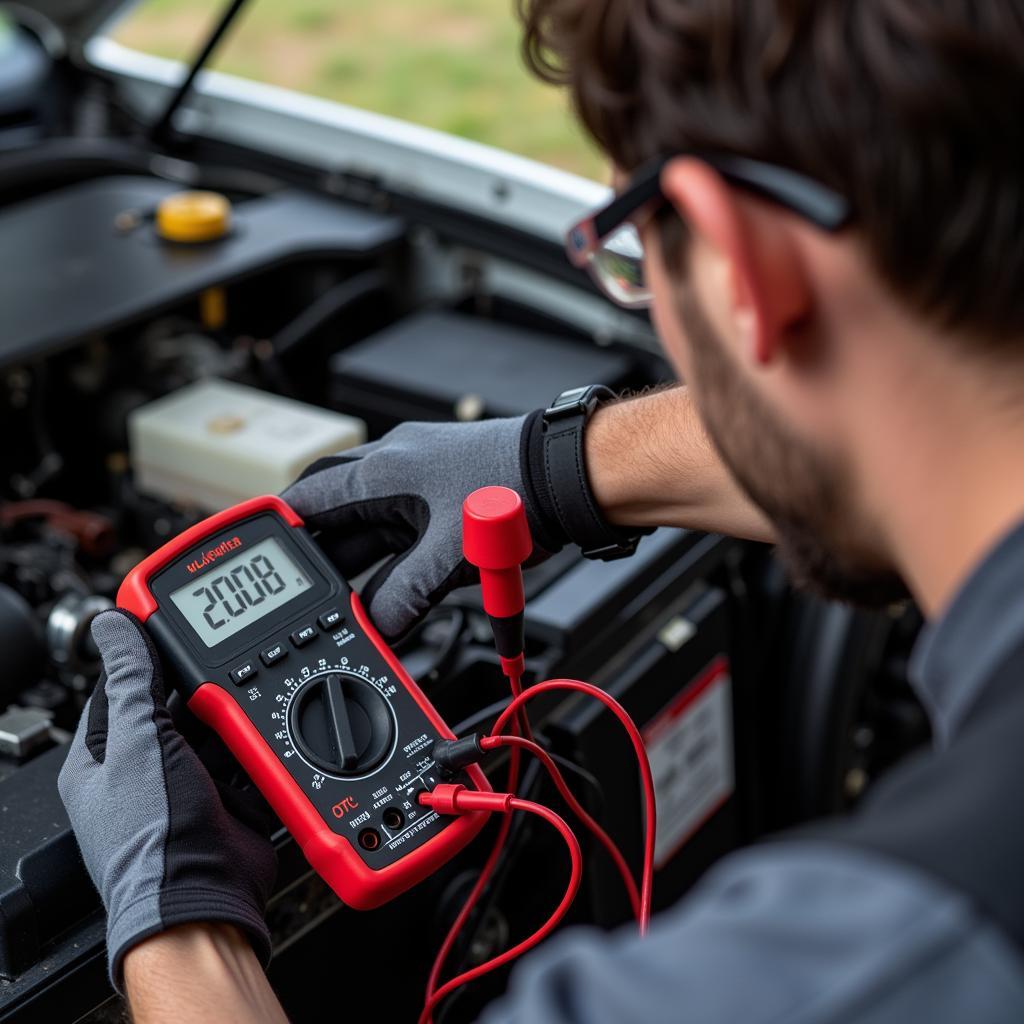A loose wire brake warning light can be a frustrating and potentially dangerous issue for any driver. This warning light, often accompanied by the ABS or parking brake light, indicates a problem within your vehicle’s complex braking system. While it could be a minor wiring fault, it’s crucial not to ignore this warning as it could signify a serious safety hazard.
Understanding Your Vehicle’s Brake Warning System
Your car’s brake warning light is your first line of defense against potential brake failure. It’s designed to illuminate if the system detects an abnormality, urging you to investigate and address the issue promptly. Here’s a simplified look at what triggers this warning light:
- Low Brake Fluid: This is the most common culprit. A leak in your brake lines or a worn-out brake component can lead to a drop in brake fluid level, compromising your braking ability.
- Faulty Brake Light Switch: This switch activates your brake lights when you press the pedal. A malfunctioning switch can confuse the system, triggering the warning light.
- Worn Brake Pads: While not always directly related to loose wires, excessively worn brake pads can sometimes cause the warning light to flicker or illuminate, particularly if they are equipped with wear sensors.
- ABS Issues: Problems within your Anti-lock Braking System (ABS), such as a faulty wheel speed sensor, can also trigger the brake warning light.
- Electrical Problems: This is where loose wires come into play. Corrosion, damage, or loose connections within the brake light wiring harness can disrupt the signal flow, leading to a false warning light.
Loose Wires: Pinpointing the Culprit
While several issues can trigger the brake warning light, let’s focus on loose wires and how to identify them:
- Visual Inspection: Begin by visually inspecting the wiring harness connected to your brake light switch, master cylinder, and along the brake lines. Look for any signs of damage, wear, fraying, or loose connections.
- Wiggle Test: Gently wiggle the wires and connectors while observing the dashboard. If the warning light flickers or changes intensity, it indicates a loose connection in that area.
- Check for Corrosion: Corrosion on the connectors can disrupt the electrical signal. Inspect the terminals for any signs of buildup and clean them with an appropriate electrical contact cleaner.
“Even a seemingly minor loose wire can cause intermittent brake light failures,” cautions John Miller, a seasoned automotive electrician. “Ignoring these issues not only risks a traffic violation but also compromises your safety on the road.”
DIY Fixes vs. Professional Help
For simple loose wire issues, you might be able to address them yourself:
- Tightening Connections: If you find a loose connector, carefully disconnect it, inspect for damage or corrosion, and reconnect it securely.
- Repairing Damaged Wires: Minor wire damage can be repaired using electrical tape and heat shrink tubing. Ensure the repair is insulated properly.
However, if you’re uncomfortable working with electrical components or dealing with more complex wiring issues, it’s crucial to seek professional help. A qualified mechanic can accurately diagnose the problem, repair or replace faulty components, and ensure your brake system functions flawlessly.
Preventing Future Loose Wire Problems
Prevention is always better than cure. Here are some tips to avoid future loose wire issues with your brake system:
- Regular Inspections: Include a visual inspection of your brake wiring during routine maintenance checks.
- Corrosion Protection: Apply dielectric grease to electrical connectors to prevent corrosion.
- Careful Handling: Avoid yanking or pulling on wires when working around the brake system.
- Addressing Issues Promptly: Don’t ignore warning lights or signs of electrical problems.
Conclusion
A loose wire brake warning light is a serious issue that should never be ignored. By understanding its causes and taking appropriate action, you can ensure the safety and reliability of your vehicle’s braking system. Remember, when it comes to brakes, err on the side of caution and seek professional help if needed. Don’t compromise your safety or the safety of others on the road.

